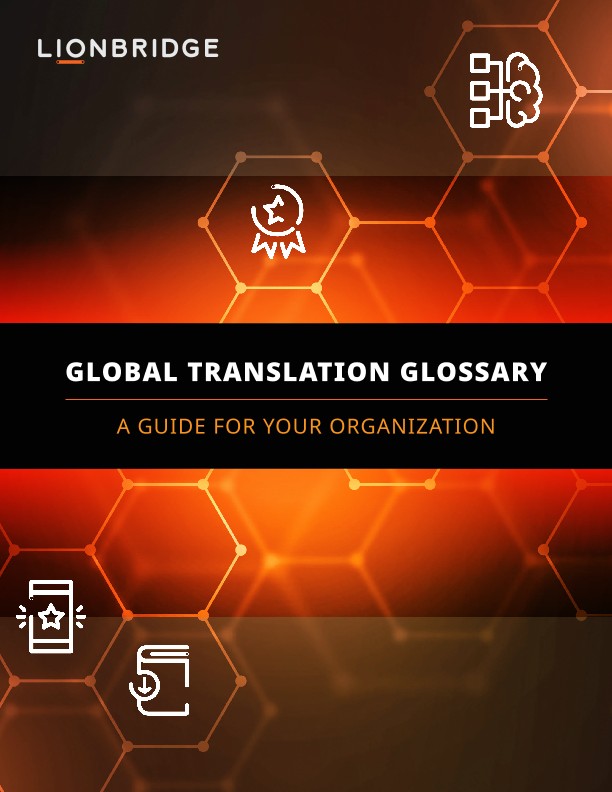- WHAT WE DO
Additional Services

- Industries

Case Study: Multilingual Retail Marketing
New AI Content Creation Solutions for a Sports and Apparel Giant

- RESOURCES

- WHO WE ARE

What We Do Home
Generative AI
- AI Translation Services
- Content Remix
AI Data Services
- Aurora AI Studio™
Machine Translation
- MT Tracker
Instant Interpreter
Customer Onboarding
Translation Service Models
Content Services
- Technical Writing
- Training & eLearning
- Financial Reports
- Digital Marketing
- SEO & Content Optimization
Translation Services
- Video Localization
- Software Localization
- Website Localization
- Translation for Regulated Companies
- Interpretation
- Instant Interpreter
- Live Events
- Language Quality Services
Testing Services
- Functional QA & Testing
- Compatibility Testing
- Interoperability Testing
- Performance Testing
- Accessibility Testing
- UX/CX Testing
Industries Home
Life Sciences Translations
- Pharmaceutical Translations
- Clinical Trial Translations
- Regulatory Translations
- Post-Approval Translations
- Corporate Pharma Translations
- Medical Device Language Services
- Validation and Clinical
- Regulatory Translations
- Post-Authorization Translations
- Corporate Medical Device Translations
- COA Translation Services
Banking & Finance
Retail
Luxury
E-Commerce
Games
Automotive
Consumer Packaged Goods
Technology
Industrial Manufacturing
Legal Services
Travel & Hospitality
Insights
- Blog Posts
- Case Studies
- Whitepapers
- Solution Briefs
- Infographics
- eBooks
- Videos
Webinars
Lionbridge Knowledge Hubs
- Positive Patient Outcomes
- Modern Clinical Trial Solutions
- Patient Engagement
- AI Thought Leadership
SELECT LANGUAGE:
Every marketer knows a translation style guide is critical to high-quality professional translations. However, developing them is not easy. These resource-intensive documents are frequently pushed down the priority list, usurped by projects with tight deadlines.
In the global marketplace, a translation style guide or translation glossary is a high-value tool. These documents go beyond helping your team create great content. They give your language services provider (LSP) — and their Large Language Models (LLMS) — the critical information required to ensure high-quality localized content for all target languages, markets, and locales. Notably, today’s AI services are especially primed to include a strong translation style guide.
A translation style guide is a set of rules for how your company presents itself textually and visually. Think of it as a guidebook for your translation service provider that includes rules about voice, writing style, sentence structure, spelling, and company usage.
A style guide isn’t a grammar manual. It helps content creators and translators choose the preferred language elements for the most effective communication with customers and prospects in target markets.
A terminology glossary contains your website content’s building blocks. It’s a database holding key terminology used by your company, customers, and their approved translations in all target languages.
The glossary helps translators (and the AI services they may use) ensure that each time a defined key term appears in a corresponding language, it’s used consistently and correctly.
On-brand, localized content is vital to global marketing effectiveness.
A 2016 Aberdeen Group report found that companies that consistently use localization services to ensure on-brand content see stronger marketing ROI — over double the average marketing ROI of companies that create local content without brand consistency (53% vs. 21%).
Aberdeen Group also found that companies that localize on-brand content achieve 46% higher customer retention rates compared to other businesses. Businesses can’t afford not to have engaging, relevant content in every target language.

You need a translation style guide and terminology glossary in the age of AI solutions
Marketers know localization is essential. A style guide and glossary are vital tools for increasing translation quality and localization effectiveness. This is especially true with today’s AI solutions. Translation service providers can include the style guide with its prompts to the AI tool. The tool can efficiently check, identify, and fix instances of noncompliance with a translation style guide or terminology glossary. Including a style guide with the prompts fed to the AI tool will dramatically expedite a translation or localization process through automation. These are the additional benefits of using a translation style guide and terminology glossary.
Engagement: Increase relevance to customers and prospects. The glossary ensures that the terms you and your customers use are translated properly into target languages. This is crucial for building and maintaining your brand’s reputation, establishing trust, and improving engagement.
Time: Get to market faster. The style guide and glossary reduce protracted discussions about how to handle certain terms or which voice is appropriate. They also reduce cycle times by negating the need for back-and-forth emails or calls about basic rules. Your LSP works faster and more accurately during the localization process.
Quality: Present a consistent message across markets. These assets also ensure consistency across markets, safeguarding consistent brand messaging in any language. Providing your LSP with these guidelines empowers their language experts to localize and/or transcreate from the same core concepts. You’ll get content with one voice in many languages.
Cost: Reduce spend. Style guides and glossaries reduce confusion and rework by providing a standard, authoritative reference for your marketing and translation teams. Approximately 15% of all translation project costs arise from rework. Notably, the primary cause of rework is inconsistent terminology.
Developing a translation style guide and terminology glossary are the first steps in the localization process. Your team can handle most of the work with guidance from your professional translation company, or you can consult with them on generating these assets for you. Whichever route you choose, using your most updated source content to create highly relevant linguistic assets is essential.
Tip: A marketer, or someone familiar with a company’s brand strategy, should work on creating a style guide and glossary before translation. An LSP can help develop materials, but a marketer must provide guidance for brand identity and industry terminology.

What to include in your translation style guide
Most companies adopt a base style manual that provides in-depth rules for everything related to style: punctuation, usage, spelling, and grammar. The most popular are the Chicago Manual of Style and the Associated Press Style Book.
The most useful and effective style guides encourage consistency with easy-to-follow rules (and examples) of style that are unique to your company or exceptions to the published rules, including:
Reference materials: Establish the localization project with critical background information, including the objective or purpose of the material to be localized (sales training, website, marketing campaign, etc.), how closely the LSP should adhere to your original source text, and whether the translation company should focus on information or style. Other essential resources include samples of source text and/or previous transcreation work, as well as preferences for handling concatenated strings and other software string issues.
Buyer persona or audience: While the marketing team likely has very detailed descriptions of each buyer persona or audience type, distilled versions are most beneficial within the style guide. Describing each persona or audience with the most critical attributes gives your LSP a clear picture of your prospect and customer, including:
- Key objectives
- Most challenging obstacles
- Fears and concerns
- KPIs and success metrics
- Information, including title, country, region, etc.
Spelling: Include the correct spellings of any words that are frequently misspelled. For instance, do you capitalize Tweet; is website one word or two? You may also include alternate spellings for various audiences, such as “color” for U.S. English speakers and “colour” for U.K. English speakers. Addressing these tiny but vital issues streamlines the editing process and ensures consistency. (This is in addition to the glossary.)
Usage, punctuation, and grammar: In addition to establishing the rules for things like serial commas, this section should also include guidance on the common mistakes to avoid. Some examples:
- Capitalization
- Citations and attributions
- First, second, or third-person voice
- Jargon, slang, puns, idioms, or culturally-specific references
- Numerals, especially in currency
- Slogans and headlines
- Tenses
- Trademarks and copyrighted terms
Visuals and formatting: This isn’t about graphics standards, but rather a clear set of guidelines for creating the look and feel for your site. This section includes information on using brand colors and logos, acceptable fonts, and rules for handling images and other design elements. Key details may consist of image placement, embedded images or text, list, and table design, when and how to use captions or credits, treatments for headlines and subheads, alt text, and italicized, bolded, or underlined text.
Voice and tone: This section ensures your web copy sounds like your company. Voice and tone may be in your brand book, but distillation is also helpful in the context of a style guide. Many marketers include adjectives or personality types to explain how text should sound. Some examples:
- Simple language
- Technical language
- Educational language
- Academic or traditional language
- Conversational tone
- Authoritative tone
- Neutral tone
- Sophisticated tone
How to create a translation style guide
Style guides are a small investment with a significant return. They help avoid countless corrections of tone, syntax, and style errors.
If you already have a corporate style guide, you can adapt it for the localization process. If you’re starting from scratch, a guide typically takes eight to 10 hours to create. (Depending on the size of your organization, breadth of product and service offerings, etc.)
Help your in-market experts participate in this vital process by simplifying their roles in one of two ways:
Create a checklist for reviewers to indicate their style preferences. You or your LSP can use these to create a formal guide.
Develop a style guide for each market and ask experts to review it. You or your LSP can use this feedback to validate market-specific guides.
Once you’ve done this internal work, you’re ready to share it with your LSP, especially if they will add it to initial input when providing AI services. Here are the six main steps toward creating a style guide for your localization project:
6 Steps for Creating a Style Guide for Localization (Including AI-Driven Solutions)
1. Client compiles new (or revises an existing) style guide and sends to LSP along with the content to be translated and all reference material, including previous style guides, if any.
2. LSP performs the source text and reference material analysis to determine areas that must be highlighted in the style guide. The LSP then extracts and defines those elements.
3. Client reviews and approves the suggested elements. If client has personnel in target markets who review material before publication, they should participate as well.
4. LSP compiles the guide. Again, if client has personnel in target markets who review material before publication, they should also participate.
5. Client reviews and approves the compilation.
6. LSP creates final style guide, inserts the localization tools and other linguistic assets to be used, and submits the guide to translators and editors.

What To Include in Your Terminology Glossary
Your glossary includes terms that must be translated consistently or shouldn’t be translated at all. Here are some examples. Your list should be comprehensive, but not all-inclusive. Choose only terms that are critical to your enterprise, such as:
Company-specific terms. Include any names associated with your business, product, or service, along with copyrighted or trademarked terms that should not be translated and that must appear consistently in any language.
Industry-specific terms. Words with multiple meanings can create problems for translators. The term “monitor,” for instance, can mean a computer display, a sentry, or the act of overseeing. Locking these terms down with a clear definition avoids confusion for your LSP and audience. You don’t need to include industry-standard terms widely used and understood by your target market.
Audience-specific terms. You invest in localization to improve relevance with speakers of target languages. One way to create deeper engagement is by including glossary terms that are important to your target audience. These may consist of slang or other commonly used industry-specific terms (like “ghosting” in gaming or “locavore” for foodies).
Keywords. Consider including keywords in a glossary. Choose words with good search volume, but you also ensure that translations are accurate. If choosing between two different terms, select the one with the greater search volume (and an exact translation). For Lionbridge’s standard optimization process, we incorporate keywords after the translation process. This helps avoid polluting the TM. Note that Indiscriminate use of a keyword may cause internal competition between two web pages. Competition often dilutes a piece of content’s ability to rank for a specific keyword.
Other data. Your glossary may also contain metadata such as the definition, context, part of speech, and approval or review date. It may also contain terms from your user interface or technical documentation.
How To Create a Terminology Glossary for Localization and AI-powered Solutions
Most marketers already have a decent start on a glossary, with keywords and special terms often outlined in the corporate style guide or other documents.
The optimal time to create a glossary is before localization starts since the document helps eliminate uncertainty during translation, enforces consistency, shortens the time it takes to translate a document, and reduces the overall cost of translation over time. This is especially true if the localization is AI-powered, as the AI tool can use the terminology glossary and automate the process of checking for consistency and replacing inconsistent words.
Here are five tips for compiling a useful glossary for localization of marketing materials:
For a new project, base your glossaries on the content specific to that project.
For projects that have already been translated, base your glossaries on the translated material, either segmented files or translation memories.
Select core terminology related to your product, processes, and company. Focus on the most common, vital, and potentially complex terms only. (See what to include, above.)
Enlist your internal local experts to review every translated term and agree on the clearest translation.
Establish language variances before you begin translating. For example, specify which language form (e.g., Portuguese Portuguese vs. Brazilian Portuguese) is correct for your target market.
Safeguard against keyword competition with this advice:
“When using keywords in a glossary, be conscious of the page you want to perform / win for that particular keyword. A simple rule, such as using the keyword to link to the page you want to win, will significantly impact. Because Lionbridge is busy promoting our AI services, we have many articles using Generative AI keywords. To ensure these articles don’t compete for the keyword, we consistently use Generative AI keywords to point at our Generative AI services page. This tells Google what page has priority for the keyword or keyword variations. It also helps us win for terms such as 'Generative AI language services'.”
—Brendan Walsh, Lionbridge SEO expert
One common — and costly — mistake marketers make is neglecting to include keywords in the terminology glossary. This omission makes ranking highly in the local search engines on your must-win keywords extremely difficult.
In addition to including must-win keywords, determine the corresponding must-win keywords in each of your target markets and languages, as well. This involves identifying preferred local terms based on search volume.
For example, “diapers” is a must-win for a brand like Pampers in the U.S. market. But even in most other English-speaking countries outside the U.S., “diapers” is not the preferred local term. In the U.K., Australia, parts of Africa, etc., babies wear “nappies.” If the term “diapers” is used in these countries, the traffic will go to the competition.
With global SEO, no matter how the search engine algorithms change over time, the best way to win on a keyword will always be to use that keyword in the translated and localized content on your web pages.
Once you have your internally generated list, you can work with your LSP to create the terminology glossary. There are six steps in the process:
6 Steps for Utilizing a Terminology Glossary for Localization (including AI-Powered) Projects
Client creates a list of terms that includes definitions and context. They send it to the LSP along with the content to be translated and all reference material — including previous glossaries.
LSP analyzes source text and reference material via a human or AI tool. They extract terms and candidates from your source language into each target language specified.
Client approves source term candidates. If client has personnel in target markets who review material before publication, they should participate.
LSP translates and researches terms, using AI services if the customer wants.
Client reviews and approves translated terminology. Again, if client has personnel in target markets who review material before publication, they should participate.
LSP creates final glossary and inserts it in the translation technology and other linguistic assets to be used.
Tip: Coordinate your SEO with your localization efforts to save time and money. While many global SEO companies perform global search analysis, few have the experience and capacity to accurately research and vet terms in every language and market. Working with an established, full-service LSP allows you to combine the research phase to cover keywords and other crucial terms in any language or market worldwide.
The Bottom Line
A translation style guide and terminology glossary are critical tools for optimizing global content performance. These resources are key to improving translation and localization quality, controlling associated costs, and accelerating the entire process. This is even more true with the increasing usage of AI tools in translation, localization, and content generation. AI can use these documents to automate the process and expedite it even further.
Investing time and resources into creating a style guide and glossary for your localization project yields a meaningful ROI. You save time and money creating the project, you increase revenue by offering better content to a larger audience, and you simplify future projects by creating a solid base of terms and information that can be expanded upon to become even more valuable to your global organization.
These linguistic assets, along with AI services, help you and your LSP improve success metrics and KPIs and gain a competitive advantage in an increasingly crowded global marketplace.
Get in touch
Want to learn more best practices for marketing content translation and global branding? Download our Global Translation Glossary Whitepaper.
Fill out our contact form to start a conversation with us.
We’re eager to understand your needs and share how our innovative capabilities can empower you to break barriers and expand your global reach. Ready to explore the possibilities? We can’t wait to help.




